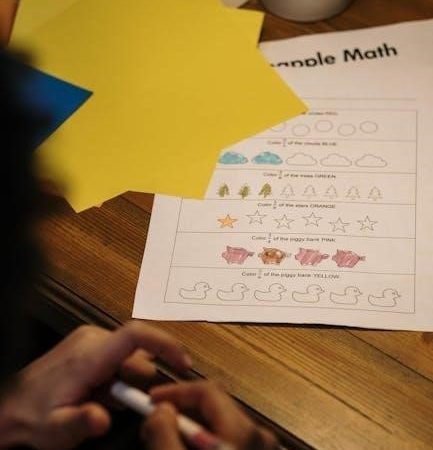Find Someone Who worksheets are engaging tools designed to foster interaction and communication among students․ They involve students moving around to find peers who match specific criteria, such as hobbies or experiences, promoting teamwork and social skills․ These activities are widely used in educational settings to create a collaborative and inclusive learning environment, making them a popular choice for teachers seeking to enhance student engagement and interpersonal connections․

Overview of the Activity
“Find Someone Who” worksheets are interactive tools designed to encourage movement, communication, and collaboration among participants․ Students are given a list of criteria or questions and must circulate to find peers who match the descriptions․ This activity promotes active engagement, teamwork, and problem-solving while fostering a dynamic learning environment․ It is often used as an icebreaker or team-building exercise, making it versatile for classrooms, workshops, or social settings․ The worksheets typically include prompts that range from simple to complex, catering to diverse age groups and learning levels․ This approach not only enhances interpersonal skills but also encourages students to think critically and connect with others in a structured yet enjoyable manner․
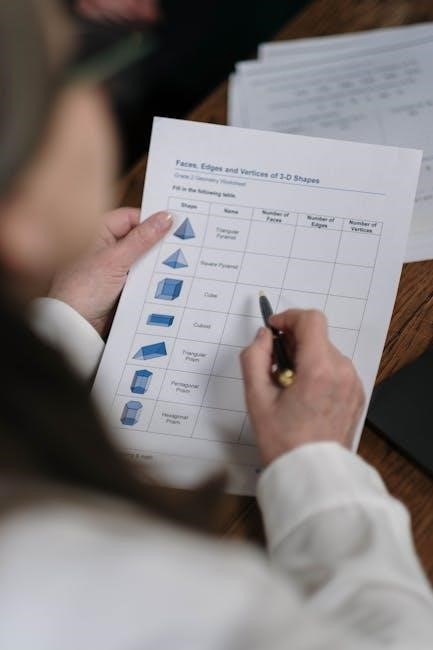
Benefits for Students and Learners
“Find Someone Who” worksheets offer numerous benefits, fostering communication, social skills, and teamwork․ They encourage students to interact with peers, breaking down barriers and building confidence․ By actively engaging in conversations, learners improve their ability to express ideas and listen to others․ These activities also promote problem-solving as students navigate finding the right individuals to match the criteria․ Additionally, they create a dynamic learning environment, making education more enjoyable and inclusive; This approach helps students develop essential life skills while fostering a sense of community and collaboration in the classroom․ The interactive nature of the activity ensures that learners remain engaged and motivated, making it a valuable tool for educational settings․
Relevance in Educational Settings
“Find Someone Who” worksheets are highly relevant in educational settings as they foster interaction, engagement, and collaboration among students․ These activities are particularly effective in classrooms, as they encourage students to move around, communicate, and build connections with peers․ They are often used during icebreakers or at the beginning of lessons to create a positive and inclusive atmosphere․ The worksheets are versatile and can be adapted to various age groups and subjects, making them a valuable resource for teachers․ By promoting active participation, they help students develop essential social skills and confidence․ Additionally, they provide a structured yet dynamic way to integrate learning objectives with interpersonal development, enhancing the overall educational experience․ Their relevance lies in their ability to make learning interactive and meaningful for students of all ages․
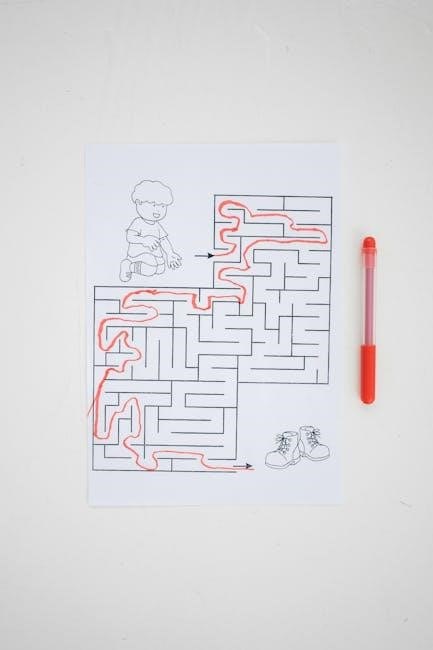
Purpose and Benefits of “Find Someone Who” Worksheets
“Find Someone Who” worksheets are designed to foster interaction, encourage communication, and develop social skills among participants․ They serve as effective tools for team-building and icebreaking activities, helping students or individuals connect through shared experiences and interests․ These worksheets also enhance language learning by promoting active listening and conversation practice․ Their versatility allows them to be used in various educational and professional settings, making them a valuable resource for educators and facilitators seeking to create engaging and collaborative environments․ Overall, they contribute to personal growth and stronger interpersonal connections among participants․
Icebreaker and Team-Building Activities
“Find Someone Who” worksheets are widely recognized as effective icebreakers and team-building tools․ They encourage students to interact with one another, fostering a sense of community and collaboration․ By moving around the room to find peers who match specific criteria, participants engage in meaningful conversations, breaking down shyness and fostering connections․ These activities are particularly useful at the beginning of a course or program to create a welcoming environment․ They also promote active listening and problem-solving skills, as students must think critically to identify the right individuals․ The dynamic nature of these worksheets makes them ideal for diverse age groups and settings, ensuring everyone feels included and valued․ They are a versatile and engaging way to build rapport and teamwork․
Improving Communication and Social Skills
“Find Someone Who” worksheets are a powerful tool for enhancing communication and social skills․ By encouraging face-to-face interaction, these activities help students develop verbal and non-verbal communication abilities․ Learners must articulate their needs clearly and listen actively to others, fostering meaningful conversations․ This process builds confidence and reduces shyness, particularly among introverted or newer group members․ The worksheets also promote problem-solving skills, as students navigate interactions to find the right person․ Over time, this collaborative approach strengthens interpersonal connections and teamwork, creating a supportive learning environment․ These activities are particularly beneficial for diverse classrooms, as they cater to various learning styles and age groups, ensuring everyone can participate and grow․
Enhancing Language Learning and Vocabulary
“Find Someone Who” worksheets are an effective tool for enhancing language learning and expanding vocabulary․ These activities encourage students to engage in conversations, using targeted language to ask questions and share information․ By matching criteria, learners practice forming sentences and understanding different contexts, which reinforces grammar and vocabulary retention․ Themed worksheets, such as those for Dr․ Seuss or Easter, introduce new words and phrases related to specific topics․ This interactive approach fosters a dynamic learning environment where students naturally acquire and use language in meaningful ways․ The repetition and variety of questions also help learners develop fluency and confidence in their communication skills, making these worksheets a valuable resource for language acquisition․
Fostering Classroom Interaction and Engagement
“Find Someone Who” worksheets are highly effective at fostering classroom interaction and engagement․ By requiring students to move around and speak with peers, these activities break the ice and encourage participation․ Learners use checklists to identify classmates who match specific criteria, such as hobbies or experiences, promoting meaningful conversations․ This dynamic approach creates a lively atmosphere, making students feel comfortable communicating in a group setting․ The interactive nature of these worksheets ensures active involvement, even from shy or reluctant participants․ Over time, this leads to stronger classroom relationships and a sense of community, making learning more enjoyable and collaborative for everyone involved․
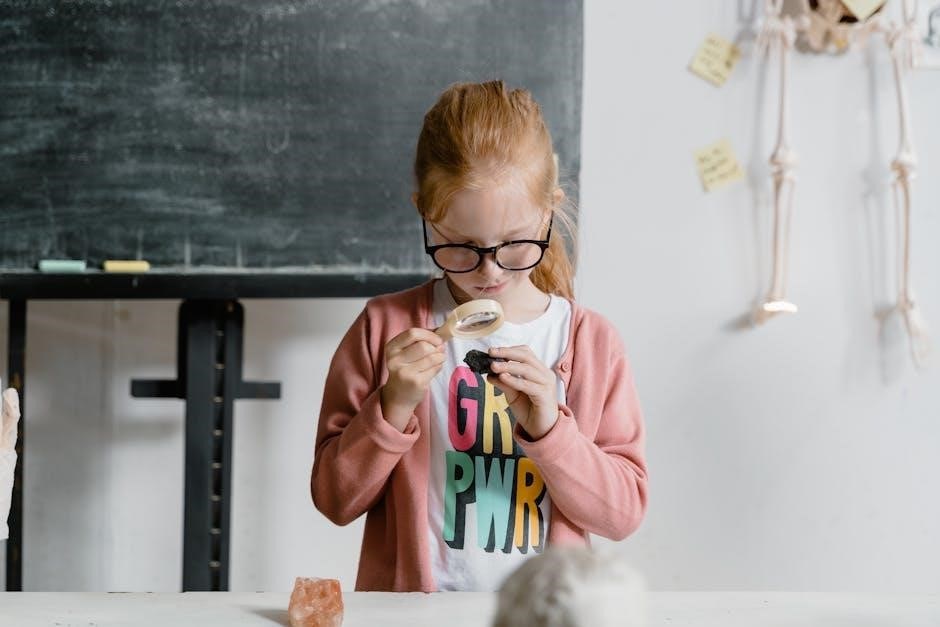
Designing Effective “Find Someone Who” Worksheets
Designing effective worksheets involves clear instructions, engaging prompts, and a focus on fostering interaction․ Ensure prompts are relevant and challenging to enhance participation and learning outcomes effectively․
Key Criteria for Creating Engaging Prompts
Creating engaging prompts for “Find Someone Who” worksheets requires careful consideration of clarity, relevance, and challenge level․ Prompts should be concise and easy to understand while encouraging meaningful interactions․ They should also align with the audience’s age and skill level, ensuring they are neither too simple nor overly complex․ Incorporating a mix of fun and educational questions can keep students motivated․ Additionally, prompts should be open-ended to foster creative thinking and encourage participants to share detailed responses․ Ensuring prompts are culturally sensitive and inclusive is equally important to make all learners feel comfortable․ By balancing these criteria, prompts can effectively promote interaction, engagement, and learning outcomes․
Age-Appropriateness and Difficulty Level
Ensuring that “Find Someone Who” worksheets are age-appropriate and difficulty-level suitable is crucial for their effectiveness․ The questions must align with the students’ cognitive abilities and life experiences to avoid frustration or disengagement․ For younger learners, prompts should be simple and relatable, such as asking about hobbies or family․ Older students can handle more complex or abstract questions, like opinions or experiences․ The difficulty level should gradually increase to match developmental stages, ensuring the activity remains challenging yet achievable․ This balance fosters participation, understanding, and engagement across diverse age groups, making the worksheet both educational and enjoyable for all learners․
Ensuring Cultural Sensitivity and Inclusivity
Creating “Find Someone Who” worksheets with cultural sensitivity and inclusivity is essential to respect diverse backgrounds and experiences․ Questions should avoid stereotypes, biases, or assumptions that might exclude certain groups․ Prompts should be universally relatable, focusing on shared human experiences rather than cultural specifics․ For example, asking about traditions or foods can celebrate diversity without singling out individuals․ Additionally, using inclusive language ensures all students feel represented․ Teachers should review prompts to ensure they align with classroom demographics and values․ This approach fosters a respectful and welcoming environment, encouraging participation from all learners regardless of their cultural identity or personal circumstances․
Visual and Organizational Appeal
A well-designed “Find Someone Who” worksheet is visually appealing and easy to navigate, ensuring students can focus on the activity without confusion․ Using a clean layout with clear headings, grids, or tables helps organize prompts effectively․ Incorporating bullet points, icons, or images can make the worksheet more engaging․ Consistent fonts and spacing prevent clutter, while color-coded sections can highlight important instructions․ Proper alignment and numbering of questions ensure readability․ A visually structured worksheet not only enhances user experience but also encourages active participation and reduces frustration․ Teachers should prioritize simplicity and clarity in design to maximize the effectiveness of the activity for all learners․
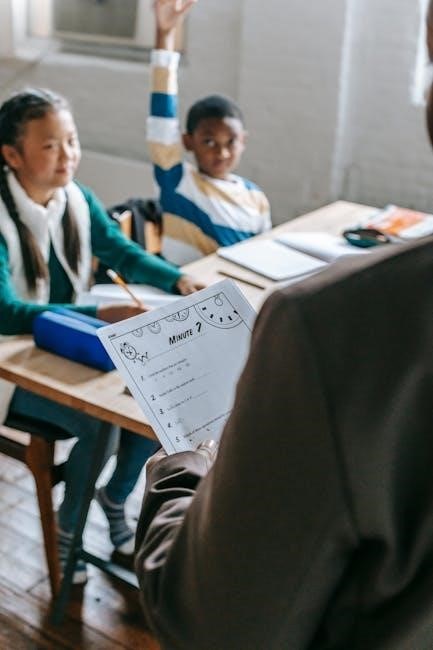
How to Use “Find Someone Who” Worksheets
These worksheets are simple to integrate into classrooms․ Teachers distribute them, students interact to find peers matching prompts, fostering collaboration and engagement through movement and conversation․
Step-by-Step Implementation in Classrooms
Begin by introducing the “Find Someone Who” activity to students, explaining its purpose and objectives․ Distribute the worksheet, ensuring each student has a copy․ Instruct them to mingle and ask peers questions to find someone who fits each prompt․ Encourage active participation and movement around the room․ Set a time limit to maintain focus and energy․ Circulate to assist and facilitate interactions․ After the activity, have students share their findings with the class, fostering a collaborative and reflective environment; Finally, discuss key takeaways, reinforcing language, communication, and teamwork skills․ This structured approach ensures engagement and learning while promoting a positive classroom atmosphere․
Facilitating Group Dynamics and Participation
Fostering group dynamics and participation is essential for the success of “Find Someone Who” activities․ Encourage students to work collaboratively by pairing or grouping them, ensuring everyone has a role․ Provide clear instructions and demonstrate examples to clarify expectations․ Create a supportive environment where all students feel comfortable contributing․ Use prompts that require interaction and sharing, such as asking follow-up questions or sharing findings with the class․ Rotate roles to give different students leadership opportunities, promoting inclusivity and engagement․ Monitor group work to address any challenges and ensure active participation․ Positive reinforcement and encouragement can further motivate students to collaborate effectively, enhancing overall group dynamics and learning outcomes․
Encouraging Active Listening and Problem-Solving
“Find Someone Who” worksheets naturally encourage active listening and problem-solving skills․ Students must attentively listen to peers’ responses to identify relevant information and ask follow-up questions․ This activity fosters critical thinking as learners analyze prompts, determine effective questions, and interpret answers․ Educators can enhance this by encouraging students to reflect on their questioning strategies and discuss alternative approaches․ Problem-solving is further promoted through navigating conversations and adapting to diverse responses․ By emphasizing active listening and creative problem-solving, these worksheets help students develop essential life skills, such as effective communication and adaptability․ Guiding students to think critically during interactions ensures deeper engagement and improved learning outcomes․

Assessing Student Progress and Feedback
Assessing student progress and providing feedback is crucial when using “Find Someone Who” worksheets․ Educators can observe participation during activities, review completed worksheets for accuracy, and evaluate students’ ability to engage in meaningful conversations․ Informal checks during the activity allow teachers to gauge communication skills and problem-solving abilities․ Feedback should be constructive, highlighting strengths and areas for improvement․ Students can also self-assess their performance, reflecting on challenges faced and strategies used․ Peer feedback can further enhance learning, fostering a supportive environment; Regular assessment helps track progress, ensuring students meet learning objectives and develop essential skills effectively․
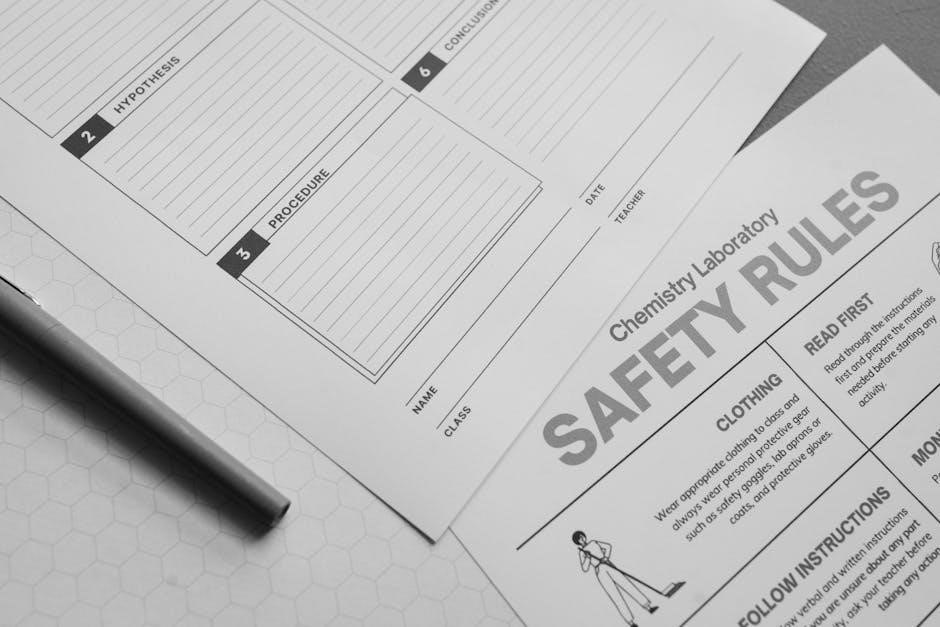
Variations and Customizations
Variations include themed worksheets for holidays or events, subject-specific versions like math or science, and digital formats for online learning, catering to diverse needs and preferences․
Themed Worksheets for Special Occasions
Themed “Find Someone Who” worksheets add a festive touch to learning, making activities more engaging and relevant to specific events or holidays․ For example, Christmas-themed worksheets might ask, “Find someone who has decorated a tree this year,” while Halloween-themed sheets could include prompts like, “Find someone who loves scary movies․” These themed variations align with seasonal or cultural contexts, fostering a sense of connection and fun among students․ They also provide educators with creative ways to integrate curriculum topics, such as language learning or history, into celebratory settings․ This approach not only enhances participation but also makes learning experiences more memorable and enjoyable for students of all ages․
Subject-Specific Versions (e․g․, Math, Science)
Subject-specific “Find Someone Who” worksheets tailor activities to align with academic disciplines, enhancing relevance and engagement․ Math-themed sheets might ask, “Find someone who can solve this algebra problem,” while science-focused versions could include prompts like, “Find someone who knows the periodic table symbol for gold․” These worksheets integrate curriculum content seamlessly, making learning interactive and fun․ They encourage students to apply knowledge in real-time, fostering problem-solving and critical thinking․ By linking the activity to specific subjects, educators create meaningful connections between social interaction and academic learning, ensuring students remain focused and motivated while reinforcing key concepts in a collaborative environment․
Digital Versions for Online Learning
Digital versions of “Find Someone Who” worksheets offer a modern and flexible approach to learning, ideal for online classrooms and remote education․ These interactive worksheets can be created using tools like Google Forms, Kahoot, or specialized educational software, allowing students to participate virtually․ Digital formats enable real-time collaboration, automatic scoring, and immediate feedback, enhancing engagement and efficiency․ They also accommodate diverse learning needs, such as audio or visual prompts for students with disabilities․ Teachers can easily share and track progress through digital platforms, making it easier to manage large classes or asynchronous learning environments․ This adaptability ensures the activity remains effective in both in-person and online settings, catering to the evolving needs of modern education․
Adapting for Different Learning Styles
To cater to diverse learning styles, “Find Someone Who” worksheets can be tailored to suit visual, auditory, kinesthetic, and reading/writing learners․ For visual learners, incorporate images, charts, or infographics alongside questions to enhance comprehension․ Auditory learners benefit from verbal instructions or audio cues embedded in digital versions․ Kinesthetic learners can engage through movement-based activities, such as physically searching for peers who fit the criteria․ Additionally, worksheets can include written reflection spaces for those who prefer processing information through writing․ By integrating these adaptations, educators ensure inclusivity and maximize participation, making the activity accessible and effective for all students, regardless of their learning preferences or abilities․
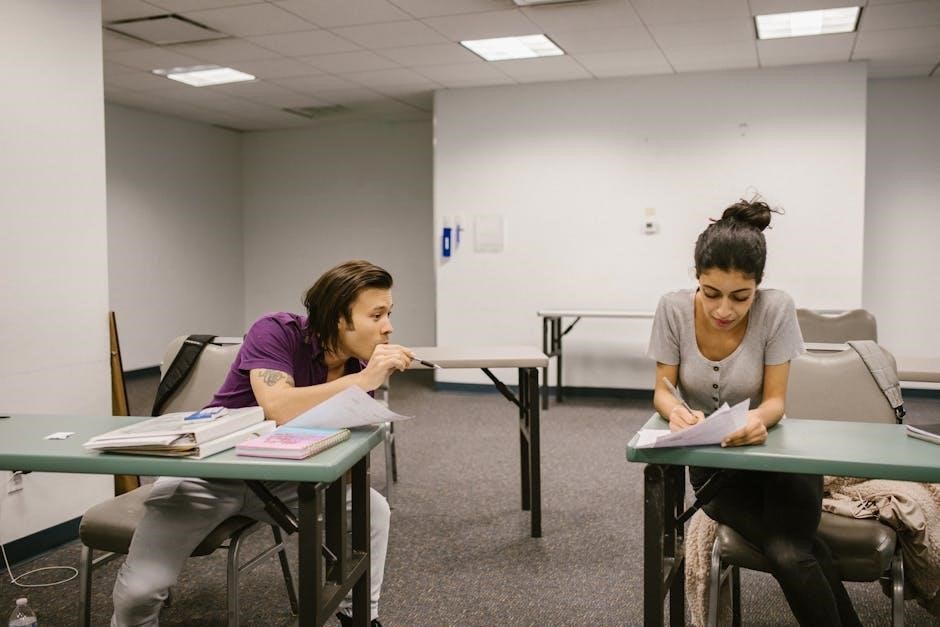
Popular Uses of “Find Someone Who” Worksheets
In Elementary and Secondary Education
“Find Someone Who” worksheets are widely used in elementary and secondary education to promote social interaction and communication among students․ They help students get to know their peers better, fostering a sense of community and collaboration․ Teachers often incorporate these worksheets into lesson plans to align with specific themes or subjects, making learning engaging and relevant․ The activity encourages students to move around, ask questions, and share information, which enhances their verbal and listening skills․ Additionally, these worksheets serve as a valuable tool for assessing students’ ability to interact and express themselves effectively․ They are particularly effective in diverse classrooms, as they promote inclusivity and cater to different learning styles․
These worksheets are also adaptable to various age groups, ensuring that both younger and older students can benefit from the activity․ They are often used during the first weeks of school to help students settle in and build relationships․ Furthermore, they can be customized to focus on specific skills, such as problem-solving or critical thinking, making them a versatile resource for educators․ Overall, “Find Someone Who” worksheets are a practical and enjoyable way to create a positive and interactive learning environment in schools․
In Language Learning Classes
“Find Someone Who” worksheets are highly effective in language learning classes as they encourage authentic communication and practice of target vocabulary․ These activities prompt students to ask questions, listen actively, and respond in the target language, reinforcing grammar and vocabulary in a meaningful way․ They also help learners develop conversational skills and build confidence in using the language․ In language classes, these worksheets often focus on specific themes or grammar structures, making them a versatile tool for reinforcing lessons․ Additionally, they foster collaboration and cultural exchange, allowing students to share personal experiences and perspectives․ This interactive approach makes language learning engaging and enjoyable, while also promoting fluency and spontaneity in communication․
In Corporate Team-Building Sessions
“Find Someone Who” worksheets are a valuable tool in corporate team-building sessions, fostering collaboration and communication among employees․ These activities encourage participants to interact with colleagues they may not typically work with, helping to break down silos and build rapport․ By asking questions and sharing responses, team members develop problem-solving skills and active listening, which are essential for effective teamwork․ The worksheets also promote a sense of camaraderie and shared purpose, making them ideal for icebreaking or strengthening group dynamics․ Additionally, they can be tailored to focus on professional skills or interests, ensuring relevance to workplace goals․ This engaging approach enhances productivity and fosters a more cohesive and connected team environment․
In Social Skills Development Programs
“Find Someone Who” worksheets are highly effective in social skills development programs, helping individuals build confidence and improve interpersonal interactions․ These activities encourage participants to approach others, ask questions, and listen actively, fostering essential communication skills․ They are particularly useful for individuals with social anxieties or those learning to navigate group dynamics․ The worksheets promote empathy and understanding by highlighting diverse experiences and perspectives․ In settings like therapy groups or special education, they serve as a structured yet engaging way to practice initiating conversations and maintaining dialogue․ By focusing on positive interactions, these tools help bridge gaps and create a supportive environment for skill development․

Additional Resources and Tools
Discover “Find Someone Who” worksheets on Teachers Pay Teachers and Education․com․ Use Google Classroom and Canva for easy customization and sharing․ Explore Pinterest for creative templates and organization tips․
Where to Find Printable Worksheets Online
To locate “Find Someone Who” worksheets in PDF format, explore educational platforms like Teachers Pay Teachers and Education․com․ These websites offer a wide variety of free and paid resources tailored for different age groups and subjects․ Additionally, Google Classroom and Canva provide customizable templates that can be easily shared and printed․ For themed or subject-specific worksheets, visit Pinterest, which features numerous creative designs and organization tips․ Many websites also offer free PDF downloads, making it simple to access and print the materials․ Always ensure the worksheets align with your educational goals and are suitable for your audience․ Organizing resources in digital folders or binders can enhance accessibility and convenience․
Recommended Websites and Educational Platforms
For high-quality “Find Someone Who” worksheets in PDF format, consider visiting reputable educational websites like Teachers Pay Teachers, Education․com, and Canva․ These platforms offer a wide range of customizable and printable resources designed for various educational needs․ Additionally, Google Classroom and BusyTeacher provide accessible materials for language learning and classroom activities․ For specialized content, ESL Library and PBS LearningMedia are excellent choices, offering themed and subject-specific worksheets․ These platforms cater to diverse learning environments and are trusted by educators worldwide․ They often include free or affordable options, making it easy to find the perfect worksheet for your needs․
Apps and Software for Creating Custom Worksheets
Several apps and software tools are available for designing custom “Find Someone Who” worksheets․ Google Docs and Microsoft Word are popular choices for creating editable templates, while Canva offers visually appealing designs․ For PDF-specific needs, Adobe Acrobat allows users to create and edit PDF worksheets․ Educators can also use Edpuzzle and Kahoot for interactive versions․ Additionally, DocHub and Smallpdf provide tools for customizing and annotating PDFs․ These platforms enable users to tailor worksheets to specific needs, ensuring engaging and effective learning experiences․ They also support collaboration, making it easy to share and modify worksheets with colleagues or students․
